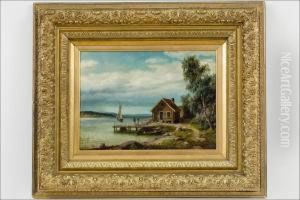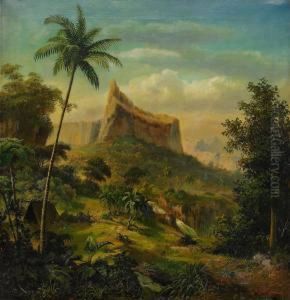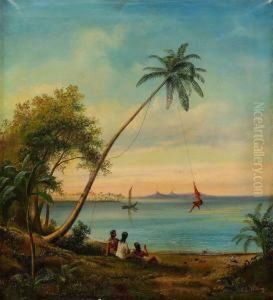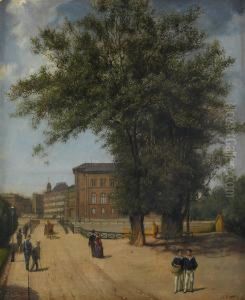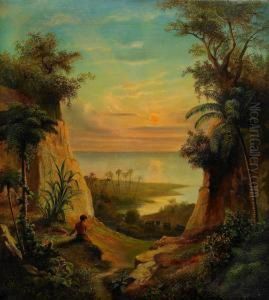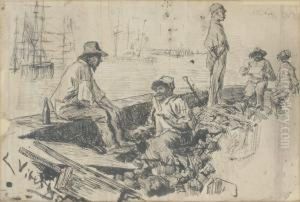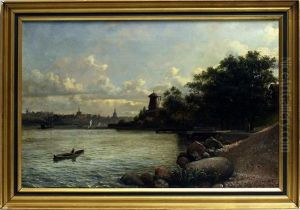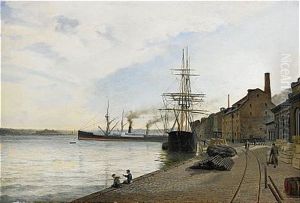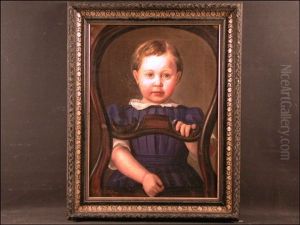Axel Leopold Wiberg Paintings
Axel Leopold Wiberg was a Swedish painter born on June 13, 1836, in Stockholm, Sweden. He is not widely recognized as a leading artist of his time, but he contributed to the art world with his landscape paintings and portraits. Wiberg's artistic journey began at the Royal Swedish Academy of Fine Arts, where he studied from 1853 to 1856. His early work was influenced by the Düsseldorf school of painting, which was known for its detailed landscapes and emphasis on atmospheric effects.
Wiberg's work was typical of the period, characterized by a romantic view of nature. He often depicted the Swedish countryside, showcasing the serene beauty of its forests, lakes, and rural settings. Wiberg's landscapes were not only aesthetically pleasing but also served as a documentation of the Swedish environment during the 19th century.
Throughout his career, Wiberg received modest recognition for his contributions to Swedish art. He participated in exhibitions in Sweden and abroad, including the World's Columbian Exposition in Chicago in 1893. His works were appreciated for their tranquility and the artist's ability to capture the essence of the Swedish landscape.
Aside from landscapes, Wiberg also painted portraits, which were well-received by his contemporaries. However, it is his landscapes that remain his most significant legacy. They reflect a period in Swedish art that was deeply connected to the natural world and expressed a national romantic sentiment.
Wiberg lived and worked during a time of transition in the art world, as the traditional academic painting style of the 19th century was slowly giving way to modernist movements. He remained relatively conservative in his style throughout his life, maintaining a focus on naturalistic representation and traditional techniques.
Axel Leopold Wiberg passed away on May 5, 1908, in Stockholm. While his name may not be widely recognized today, his paintings are part of the narrative of Swedish art history, representing the 19th-century romantic tradition. His works can be found in various Swedish museums and in private collections, serving as a window into the Swedish landscape of his time.
